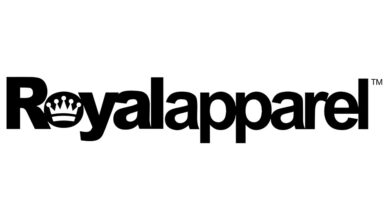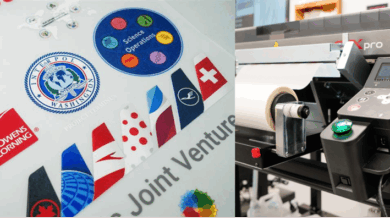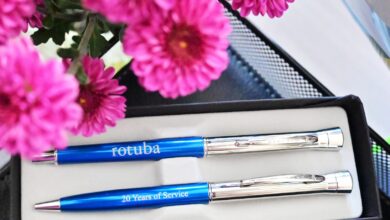In the DTG (direct-to-garment) and DTF (direct-to-film) printing and garment decoration industry, understanding certifications can be a foreboding task. While certifications can provide vital information on safety, durability, and environmental impact, understanding their implications can be crucial to your business. By familiarizing yourself with the most critical certifications for DTG and DTF printing, you can ensure your products adhere to rigorous industry and safety norms while meeting the demands of conscientious consumers.
Certifications establish a standard of excellence, serving as tangible signs that a product not only meets, but surpasses, industry expectations. They go beyond mere endorsements, providing assurance that the products you use have undergone strict testing and meet specific criteria set forth by certifying bodies. These certifications cover various aspects, including environmental impact, user safety, and product durability.
Gaining a thorough understanding of the following essential certifications, and their significance in the industry, can play a vital role in the success of your business.
- OSHA compliance: The Occupational Safety and Health Administration (OSHA) is a federal agency that plays an essential role in ensuring the safety and well-being of workers. OSHA sets and enforces specific safety standards to protect employees from workplace hazards and promote a healthy work environment. Compliance with OSHA regulations is a legal obligation to which every employer must adhere. By prioritizing OSHA compliance, you not only protect the welfare of your employees, but also demonstrate your commitment to providing a safe and secure workplace for everyone.
- AATCC standards: Developed by the American Association of Textile Colorists and Chemists (AATCC), these internationally recognized standards provide comprehensive assessments of the durability and performance of printing inks and printed products in the textile industry. With meticulous testing and evaluation methodologies, AATCC standards serve as a reliable benchmark for measuring and ensuring lasting quality in textile printing processes and products.
- Oeko-Tex certification: This independent certification evaluates textile product safety, including its chemical components. It ensures products have been tested and are verified to be free from harmful substances such as pesticides, heavy metals, and carcinogenic dyes. When a product is Oeko-Tex certified, you can trust it is not only safe for human health, but also environmentally friendly.
- CPSA regulations: The Consumer Product Safety Act (CPSA) in the United States sets safety benchmarks for consumer goods, aiming to protect the well-being of individuals, particularly children. Compliance with these regulations is not only crucial, but also an ethical and legal responsibility for manufacturers. This is particularly significant when it comes to inks used in products intended for children, as their safety and health should be of utmost priority. By ensuring that the products you manufacture meet these stringent standards, you contribute to the overall safety and peace of mind of consumers, while also upholding your commitment to social responsibility.
- Material safety data sheets (MSDS): This crucial document provides comprehensive information on chemical properties, potential health impacts, protective measures, and environmental hazards associated with a particular chemical or ingredient. In the garment decoration industry, it is imperative that every ink, pretreatment, and powder-based application product is accompanied by a detailed MSDS, outlining its ingredients and in-depth insights into safe usage practices. This information is invaluable for training employees on proper chemical handling techniques and implementing robust safety protocols, ensuring a proactive approach towards accident prevention and overall workplace safety. By equipping workers with the knowledge and guidelines outlined in MSDS documents, businesses can create a secure environment that prioritizes the well-being of their employees while effectively mitigating potential risks and hazards.
- Personal protective equipment (PPE): Material safety data sheets (MSDS) may recommend the use of masks, safety glasses or other safety equipment when working with hazardous substances. PPE plays an important role in maintaining a secure and compliant workplace by providing an additional layer of protection for workers. Prioritizing the use of PPE can significantly reduce the risk of accidents and injuries in the workplace.
- UL certification: Underwriters Laboratories (UL) certification is an internationally recognized standard for safety. It provides assurance that products — including those with electric components like heat presses, printers, shakers, and dryers — have undergone rigorous testing and meet stringent safety requirements.
- CE marking: For products destined for the European market, the CE mark is required. It serves as a visual indication to consumers that the product has undergone thorough testing and evaluation to ensure its safety, environmental impact, and compliance with the stringent standards set by the European Union. Some U.S. states have also adopted CE regulations, further emphasizing the importance and recognition of this marking.
- California Prop 65 compliance: This legislation, officially known as the Safe Drinking Water and Toxic Enforcement Act, requires businesses to provide Californians with clear and reasonable warnings about significant amounts of chemicals known to cause cancer, birth defects or other reproductive harm. This proactive measure ensures that Californians are informed about potential risks and can make well-informed decisions when it comes to products sold or used in the state. Compliance with California Prop 65 is required for businesses operating in California, as it helps protect the health and safety of consumers.
The role of certifications in your business
The impact and reach of these certifications extend beyond mere validation of quality. Here’s what they mean for your business:
Quality assurance: Certifications serve as beacons of consistent quality, confirming that your printed products perform to the highest industry standards. By adhering to stringent quality control measures and utilizing safe ingredients, these certifications enforce the production of safe and reliable products that meet the expectations of customers and regulatory bodies. This commitment to quality not only enhances customer satisfaction but also builds trust and credibility in the market.
Customer trust: Building customer trust is crucial for any business. One effective way to establish trust is by using products that are certified for safety and performance. When you provide customers with certified products, you effectively communicate that their well-being and satisfaction are your top priorities. This can strengthen your relationship with customers and safeguard your reputation as a reliable and trustworthy brand. To ensure maximum impact, take the time to determine which certifications hold significance for your customers and make sure to highlight those in your messaging. By doing so, you can instill confidence in your customers and differentiate yourself from competitors.
Regulatory compliance: By using certified inks and products, you not only demonstrate your commitment to quality and safety, but also stay on the right side of the law. This helps to avoid potential fines or recalls that can arise from non-compliance with standards like Prop 65 and CPSA. To maintain compliance, it is recommended to regularly audit workflow and make necessary adjustments or abandon non-compliant practices. By doing so, you can protect your business reputation and maintain the trust of your customers.
Employee safety: Guaranteeing proper certifications are in place is fundamental for providing employees with a safe working environment. These certifications include compliance with MSDS and PPE guidelines. By meeting OSHA safety standards, you can enhance employee safety and minimize workplace hazards.
Environmental responsibility: By obtaining certifications that are specifically focused on sustainability, you can greatly reduce your company’s ecological impact and contribute to building a safer and greener future. This showcases your commitment to environmental values and appeals to a growing number of customers who are attracted to green and sustainable efforts. Including information about these environmental certifications on your website and in marketing materials will underscore your commitment to sustainable practices and strengthen confidence in your company.
Understanding and complying with relevant certifications is not something to take lightly; it can help to make or break your business. When choosing DTG and DTF printing products, it is important to consider not only their performance and cost, but also how they impact your commitment to safety, quality, and the future of our planet. By embracing certifications, you can watch your business thrive, benefiting from enhanced safety measures, increased customer loyalty, and operational excellence.




